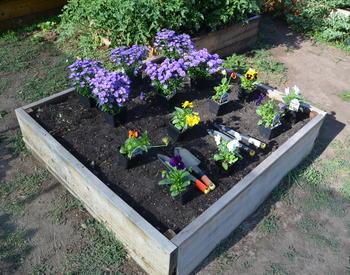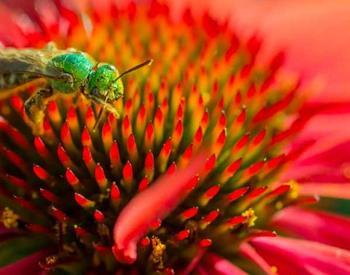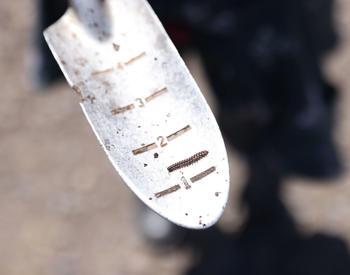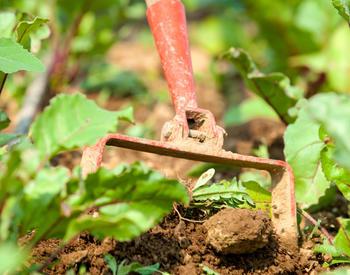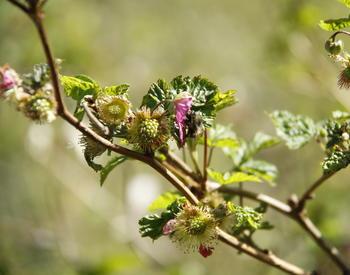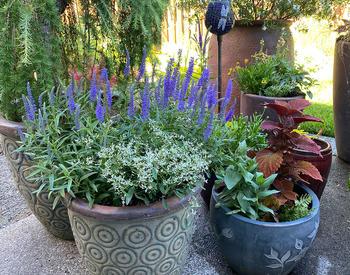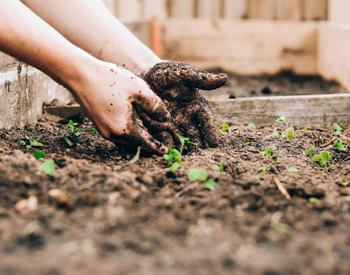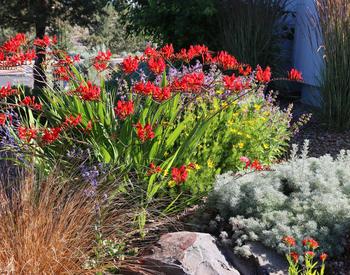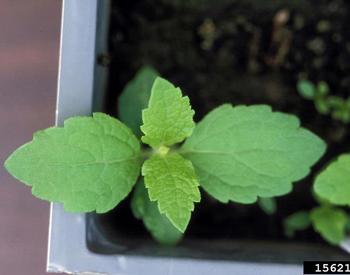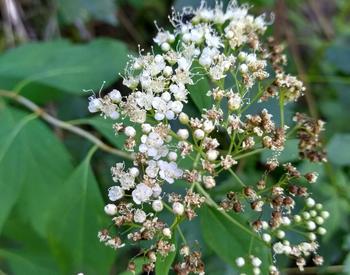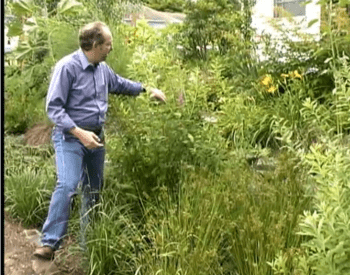More than 2,000 local gardeners converse on the Facebook group “Gardening in Klamath Falls, Oregon,” trading plants, information and suggestions. A common theme, especially among gardeners new to the area, is “When do you plant ... ?” Gardeners with experience in our climate consistently point to the first week of June as the best time for planting warm-season vegetables, those that need warm soils (above 55ºF) to thrive.
The “best” time still comes with challenges. Nighttime temperatures in the low 40s and high 30s are not uncommon in June. Warm-season vegetables do not appreciate those temperatures — cool air and soil stunt growth and interfere with a plant's ability to take up nutrients. Vegetable gardeners are faced with an unfortunate gardening conundrum — waiting for warmer weather in an already too-short growing season, or committing to plant protection on cold nights. If seeds have been started inside, “hardening off” and additional protection on cold nights, are crucial to success.
University of Minnesota shares extensive explanations of season-extending techniques for the home garden here: Extending the growing season: start early, end later.
An important strategy for success with warm-season vegetables is choosing varieties likely to mature quickly. Most seed packets and plant labels include this information with the acronym DTH (days to harvest) or DTM (days to maturity). Choosing varieties with shorter DTM decreases chances for intersection with frost in a climate where frosts are possible at almost any time.
All of the warm-season vegetables below are killed by a hard frost, even when mature. The cultivars (cultivated varieties) listed for each vegetable have particularly low DTM for their group, possible candidates for the Klamath vegetable garden.
Tomatoes
Ultimate sun lovers, tomatoes should be planted where they can receive plenty of light and protection from wind, which breaks branches as fruit becomes heavy. When low night temps are forecast, cover tomato plants with cloth — freeze cloth, old sheets — during the hottest part of the day to trap heat inside with the plants.
For slicing tomatoes, the “early” series has the lowest DTM: ‘Early Girl’, ‘Early Doll’, ‘Early Wonder’. For small tomatoes, two heirloom varieties mature early (60 days): ‘Grape’ and ‘Matt’s Wild Cherry’. There are also dwarf tomatoes for those with containers to be moved indoors on cold nights.
Cucumbers
Cucumbers are tropical plants, preferring warm air and soils warmer than 60ºF. Mulch, whether shredded wood products or black plastic, can help keep the soil in the warmer range that cucumbers prefer. Numerous slicing cucumbers produce in the 55 DTH range, including ‘Bush Champion’, ‘Raider 52’, ‘Garden Sweet’, and ‘Sweet Success’. A few picklers may produce even more quickly, including ‘Calypso’ and ‘Picklebush’.
Beans
Like cucumbers, beans need warm soil — they’ll germinate at 60ºF but prefer even warmer soil, 80º–85ºF. For this reason, gardeners in areas like the Klamath Basin might consider starting beans indoors, which is rarely recommended in places with longer growing seasons. Another consideration might be pole vs. bush-type plants.
Depending on the season extension method employed, it might be difficult to protect pole beans on a cold night — it’s much easier to throw blankets or cover bush-type plants. Most lima and drying beans take too long to mature to be successful in the Klamath climate, but numerous snap beans are in the 50 DTM range: ‘Burpee’s Stringless’, ‘Cherokee Wax’, ‘Greencrop’, ‘Mascotte’, and ‘Provider’. The quickest maturing dry beans are ‘French Horticultural’ and ‘Tongue of Fire’, an heirloom variety, both at 70 DTM — most take much longer.
Squash
Compact varieties are better suited to frost protection than some of the older, rambling squash varieties. In general, summer squash mature quickly (most at 45–60 DTM), while winter squash take much longer (70–110 DTM). Winter squash will likely benefit from planting in black plastic or landscape fabric. Remember that the first blooms on most squash plants are male — don’t be alarmed when the first round of flowers drop off without any fruit production.
Pumpkins
Pie pumpkins, which are smaller at maturity, are the best bet for the Klamath gardener, with a few varieties such as ‘Big Red California Sugar’ (85 DTM) and ‘Autumn Gold Hybrid’ (90 DTM), maturing more quickly. Most varieties, especially large and jumbo pumpkins, have DTM well over 100 days.
Pumpkins can tolerate soil temperatures as low as 55ºF but prefer the 65º–70ºF range and grow best there. If larger pumpkins are desired, remove all but one fruit from the vine early in development, and only allow one fruit per vine to develop. Of the warm-season plants described here, pumpkins will consistently be the most challenging in the Klamath climate.

